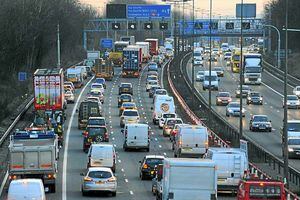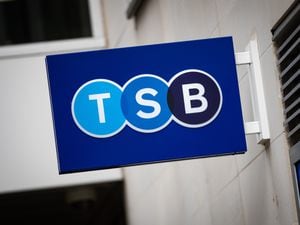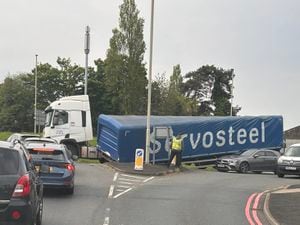M6 hard shoulder to become fourth lane in Staffordshire
A permanent fourth lane on the M6 will be created by replacing the hard shoulder, it has been revealed.

The 17-mile stretch between junction 13 at Stafford South and junction 15 at Stoke was announced by transport minister Andrew Jones.
The project is aimed to be completed by 2022 but not details have been given when work will start.
So far there are only 80 miles of hard shoulder that have been turned into a fourth lane, known as All Lane Running (ALR), in the country, including the newly completed stretch between on the M6 between 11a for the M6 Toll and junction 13 at Stafford South.
Many so-called 'smart motorways' also allow the hard shoulder to become a fourth lane, such as the M6 between junction four and 10a.
Almost 250 miles of ALR are set to be added to the road network by 2020 while almost 350 miles are due to be started but not finished up to 2020.
Meanwhile, there are also plans announced for just over 100 miles of ALR to be developed in the period between 2020 and 2025.
Shadow transport secretary Lilian Greenwood believes the Government needs to do more work to understand the implications of ALR.
"There are real concerns about the way all-lane running has been introduced on our motorways, without adequate evidence or consideration of the safety concerns raised by motoring organisations and the emergency services," she said.
"The lack of public consultation also means that many drivers will be unaware of the changes to the way the road network operates.
"The Government need to address these issues before it is too late, rather than waiting for accidents to happen."
ALR schemes can be used as part of a managed motorway or with the hard shoulder in full-time use, with refuge areas placed at regular intervals for people to use in an emergency.
The other existing ALR schemes are on sections of the M25 and M1.
The Commons Transport Select Committee is currently conducting an examination of the safety of all-lane running schemes.
Louise Ellman, the chairman of the committee, said: "We are about to start an inquiry in April. This is a major part of transport policy and we want to investigate whether all-lane running is effective and whether it is safe.
"The Government has clearly decided to do this but there is a need to look much more closely at whether it will be effective and whether it will be safe".
ends
Both the AA and the RAC have expressed concerns about all-lane running.
RAC spokesman Simon Williams said: "While the RAC supports the principles of 'smart' motorways as the most cost-effective and rapid means of increasing capacity and reducing congestion, we would prefer to see the dynamic hard shoulder configuration used, where the hard shoulder is used as a running lane at busy times, as opposed to the all-lanes running one which leaves road users permanently without a hard shoulder.
"The decision to use an all-lanes running configuration as a default was taken before any trial took place, and although early signs show a cautious improvement on safety compared to a conventional three-lane and hard shoulder motorway, it is simply too early to make a judgment on doing away with almost 250 miles of motorway hard shoulder."
Edmund King, the president of the AA, believes the number of refuge areas needs to be doubled and they need to be increased in size.
He said: "The AA has consistently raised safety concerns regarding the new generation of 'smart motorways'.
"We were so concerned that the AA Trust has designed its own free course, 'Drive Motorway', to help scared drivers cope with increased anxiety over using motorways without hard shoulders."
A Highways England spokesman said: "Our motorways are some of the safest in the world, and there is evidence to show that where all lane running has been introduced, there have been fewer collisions and congestion has reduced.
"As we gradually roll out these upgrades on our motorways, we will continue to evaluate all lane running schemes and work closely with all the emergency services to ensure safety is maintained."





